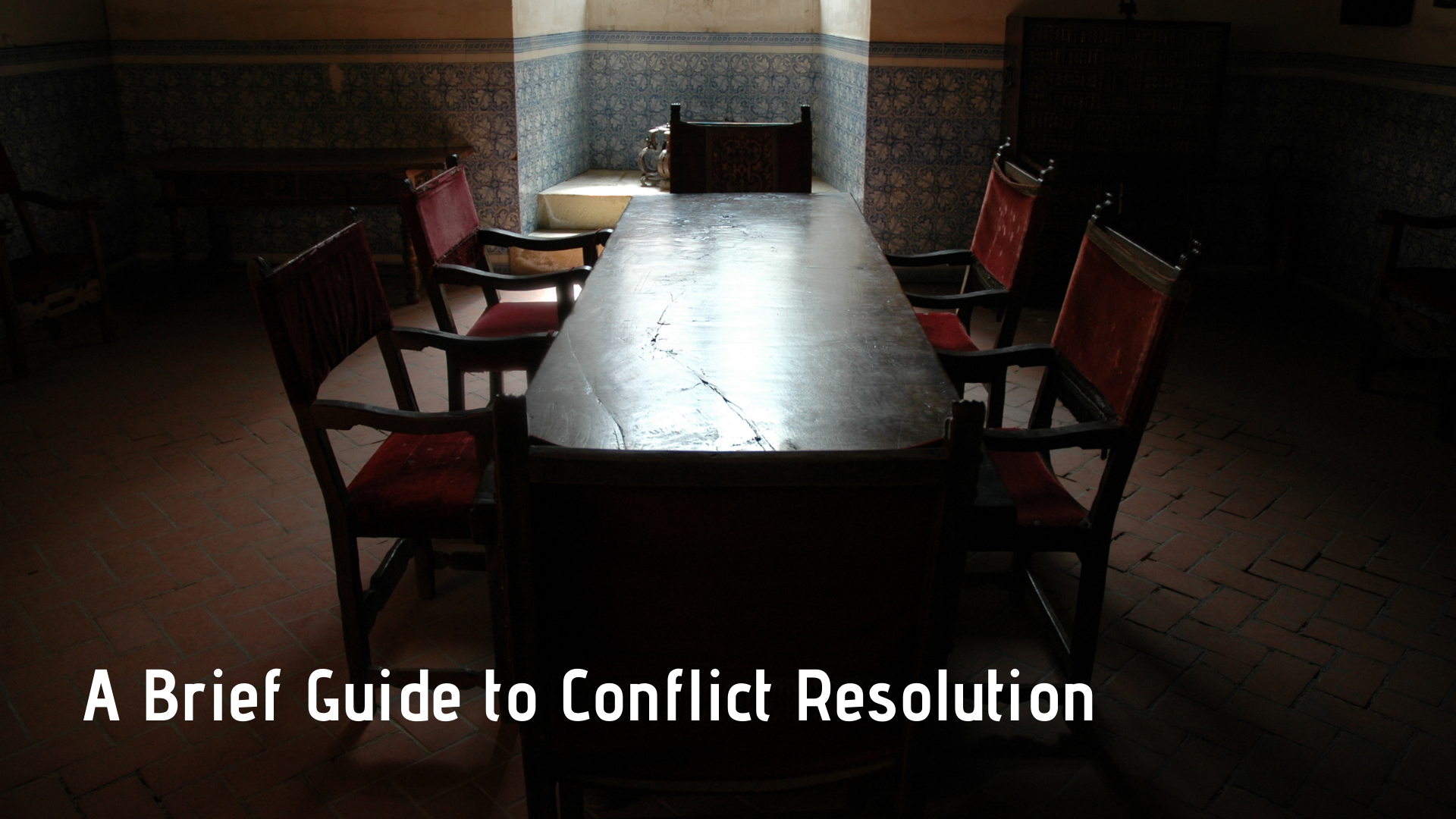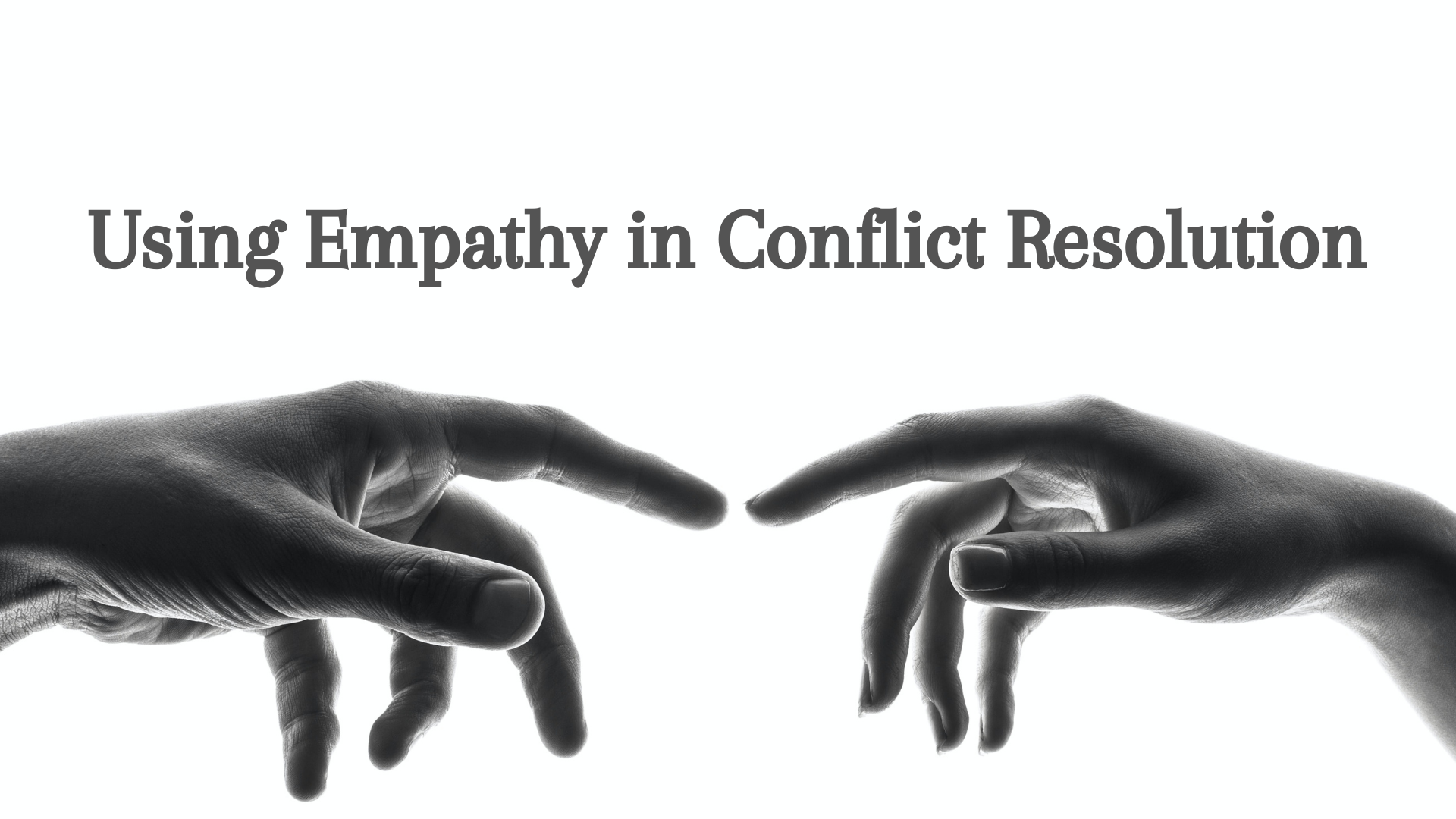Avoidance is a strategy that has low concern for the self (and is not active in asserting their desires) and low concern for the other (and does seek to fulfill the other’s desires). Psychologically, a conflict-avoider uses reactive approaches to issues and seeks to neglect them or pretend they don’t exist in the first place. Physically, mentally, and emotionally, they remove themselves from the experience in hopes that by withdrawing, the conflict will magically disappear.
With much dust under the rug, the conflict, however, remains and the outcome is lose-lose.
Strategy #2 — Yielding
Also known as accommodating, yielding happens when we suppress our experience and submit to the other. Especially if the other is dominant (see Strategy #3), we seek to be a peacemaker.
This approach, then, has low concern for the self (and is the opposite of being self-assertive) and high concern for the other (using empathy to satisfy their desires at the expense of your own). They win and you lose.
When both people yield, you end up with a quaint, slightly passive-aggressive conversation of which comedians make fun of Mid-Westerners for.
Strategy #3 — Competitive
A competitive approach is most evident by the use of force; mostly rhetorically, but can certainly occur with the use of physical force. At least one individual asserts themselves to dominate the other making for a high concern of self and a low concern of the other.
These conflict situations are described by the use of argument, insults, and power tactics used to intimidate the other person and get them to accept your views in the hopes of satisfying your desires at the expense of theirs. You win, they lose.
Don’t look too hard for an example. Pretty much all of 2020 is a case study in this approach. American politics, in general, is founded on such a principle.
Strategy #4 — Conciliation
This strategy is best described as the process of compromise — a sort of bargaining that has a moderate concern for self (and will assert some desires) and a moderate concern for the other. Conciliation desires fairness by using a mutual give and take so that both parties (kind of) win.
There is a hint that, while this strategy seems better than the others listed so far, we aren’t quite there. At the same time, this is the assumption most people have concerning what conflict resolution consists of.
Strategy #5 — Cooperation
Here, competition is off the table. Instead, those in conflict, as opposed to holding onto specific positions, articulate their interests and use creative problem-solving to integrate the desires of both parties.
Cooperation has a high concern for self (and asserts the self’s desires) but also a high concern for others (and actively engages in empathy to promote the interests of the other). The goal, then, is a full-scale win-win.
You may notice that there is some yielding occurring so that the self doesn’t assert itself at the expense of the other. However, there is a mutual interdependence amongst the participants so as to satisfy everyone involved to the greatest extent. When the approach is taken that each participant is invested in themselves and one another, the interest of all can be integrated with the hopes of finding collective agreement.
In Western society, this disposition is rare. An exploration of individualism versus collectivism reveals roadblocks to accomplishing this strategy as neither cultural disposition is certain to produce healthy cooperation (Individualist cultures tend towards competition, Collectivist cultures tend towards avoidance or yielding), yet both are capable of fostering a cooperative, collaborative approach to conflict resolution.
Models of Conflict Resolution
A brief glimpse at a small survey of common conflict resolution theories shows the emphasis on attaining the strategy of cooperation while also unpacking some of the practical requirements of doing so.
Various models presented in theories are interacting with what is sometimes called the ‘Conflict Resolution Curve’ which acts as a sort of spectrum to the amount of aggression and accommodation suggested for successful, healthy mediation.
Let’s look at how the following theories may relate to particular strategies.
Cooperative Model — (Deutsch)
This model suggests that one must bring a cooperative orientation to negotiation. Through trust and mutually beneficial intentions, both parties can win.
What this theory emphasizes is that one must have a balance to their goals. They must still hold onto their self-assertion, thereby confronting avoidant or yielding strategies, but must also consider the goals of the other, thereby confronting a competitive approach.
Taken at face value, the Cooperative Model can easily stop at conciliation and is more concerned about getting participants to consider win-win scenarios and pay attention to the concerns of both the self and the other.
Principled Negotiation Model — (Fisher, Ury)
One of the most mainstream articulations on conflict resolution, the Principled Negotiation Model is one of the best approaches to accomplishing the cooperation strategy.
The most effective function of this model is the suggestion to view a conflict through the lens of interests as opposed to positions. The example they use is of a conflict over an orange. If two parties simply fight over the orange, one will have to win and another will have to lose or they could compromise and split the orange. However, they may find that their interests in the orange are different — one may want the juice and the other may want the rind. Approaching a conflict from the perspective of inherent interests allows both parties to fully win while still respecting their concern for themselves and their concern for the other. The language of mutual satisfaction, integration, and invested problem-solving find fulfillment.
Particularly, Fisher and Ury suggest four standards to enact this model and, therefore, fulfill a truly cooperative approach:
Separate the people from the problem.
Focus on interests, not positions.
Generate options (creative problem-solving).
Find agreement based on objective criteria.
Psychologically, there is a particular disposition towards the relationships within the conflict situation that allows for not just conflict resolutions, but constructive relational futures, as well.
Human Needs Model — (Burton)
Principled Negotiation is a monumental step in conflict resolution progress, however, like most progress, finding one form of achievement leads to new problems in other contexts.
The issue raised in the Human Needs Model is that interests and agreement are good if the conflict does not deal with basic human needs.
Here, the denial of fundamental needs means that both sides are not intrinsically functioning interdependently and, therefore, cooperation will mean one party continuing to forego certain health. Namely, both parties cannot win in a situation of inequality because one party has already determined control and power over the other. If said person does not make compromises, then the unstable relational structure will continue. As a result, that person should not be satisfied with fulfilling their interests if their interests are dehumanizing. Also in contradiction to the Principled Negotiation Model is that, in a case such as this, you can’t separate the person from the problem if their forceful disposition is the cause of the problem.
Issues like boundaries and third-party mediators become essential here, but the Human Needs Model still proposes a methodology for interacting with a conflict resolution situation.
First, the mediation must begin by identifying the needs that are threatened. If the person doing the threatening is truly cooperative, this can happen amongst the parties themselves. Often, a formal mediator is required.
Second, before the conflict can move into a Principled Negotiation approach, the relational dynamic must be restructured so that both people can be accommodated. In short, in situations of human need discrepancies, counseling must precede conflict resolution.
Also of interest, though we may assume this is concerned with interpersonal relationships, this model has been highly useful in national conflicts where tyrannical or imperial relationships exist.
Conflict Transformation Model — (Bush, Folger, Lederach)
Many theories exist utilizing this concept which seeks to eliminate unequal distributions of concern for either the self or the other by various parties. Conflict Transformation, then, is about addressing potential negative attitudes and communication patterns that are inhibiting the cooperation strategy.
This model assumes that cooperation is the goal, but practically understands the need to transform the participant’s dispositions before such a strategy is realistic.
Namely, there is a focus on discourse to understand one’s own concerns, recognize the other’s concerns, and give attention to how previous postures, behaviors, and communication patterns have inhibited mutuality.
Conflict Transmutation Model
Various theorists have expanded on the Conflict Transformation Model with a slight adjustment. Both of these models are primarily in response to Principled Negotiation and the goal of the cooperative strategy, but the focus of the Conflict Transmutation Model, which takes its cue from alchemy, is about altering the state of the participants so that they can engage the conflict in another form inherently different from the approach which brought them to the conflict.
The focus of this model is not just addressing negative attitudes and communication patterns, but addressing the underlying factors and sources which brought them to a place of avoidance, yielding, or competition and those factors which caused the conflict in the first place.
Only then, the model argues, can both parties mutually problem solve and search for agreement.
The Goal of Conflict Resolution
Looking at the various models and strategies, the desired outcome ought to be cooperation, even if you need to take some other steps to get there.
At the end of a meditation situation, if both parties leave with both of their interests fulfilled at the same time and with a deeper sense of connection, mutuality, and investment as interdependent collaborators then the hopes of having high concern for both the self (assertiveness) and the other (empathy) will lead to a satisfying win-win.
In terms of the types of conflict, this would be the Active Constructive type which is exemplified in the cooperative strategy.
While the other strategies have their place — even conciliation can be positive — cooperation is resoundingly promoted. Principled Negotiation may be the most tactile model for achieving such ends, but, because of our tendency towards other strategies, the other models are certainly worth considering in accomplishing the active, constructive vision of cooperation.
But here’s where the goal is most important.
Because when you interact with the natural, inevitable reality of conflict in this way, you are not just resolving a conflict.
You are exemplifying the greatest propensity of being human.
















![Three Reasons We're Lonely - [And Three Responses For Being Less So]](https://images.squarespace-cdn.com/content/v1/5963d280893fc02db1b9a659/1651234022075-7WEKZ2LGDVCR7IM74KE2/Loneliness+3+update+%283%29.png)



























